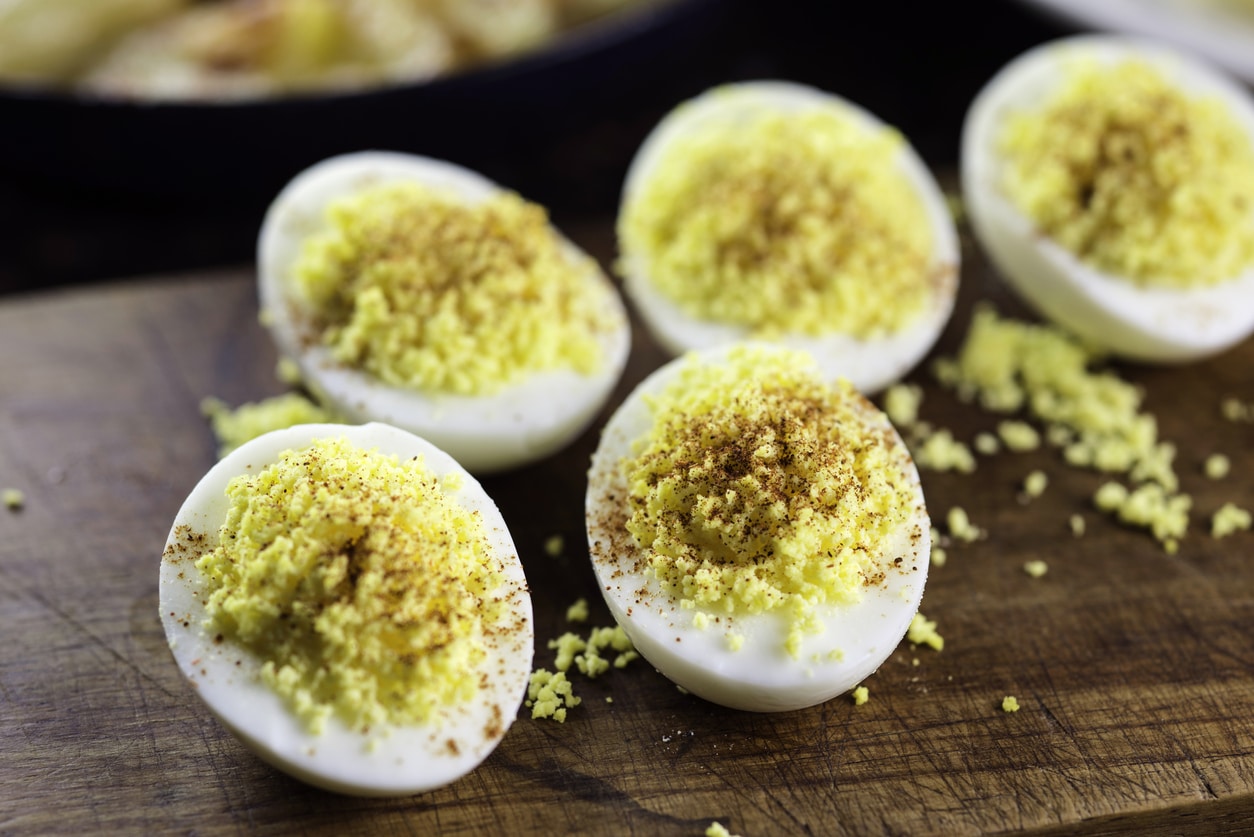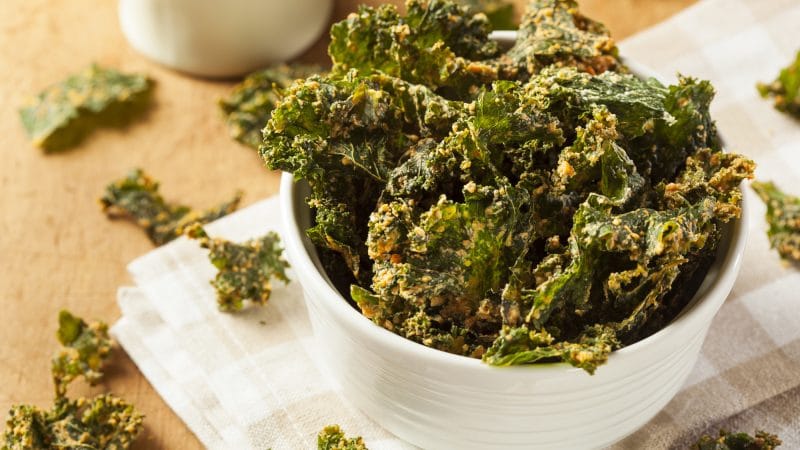Should You Get a Virtual Personal Trainer?
Motivating yourself is hard, ask anyone who works freelance. Going to the gym is often the same. Sometimes what you need is somebody to motivate you, to tell you that you are doing the right thing and that you can do this, that you are ever-so nearly there.
But hiring a fitness coach can help with more than just motivation. A coach is an expert who can tell you where you’re going wrong, what equipment, and what exercises are the most effective. Sometimes a coach is all you need to ensure you meet your goals.
Is Online Fitness Coaching Worth It?
Some people start going to the gym in their teens, others in their 40s or older have never been to the gym. That is ok. The problem is the longer you put it off the harder it can become to know where to start.
Online personal training is very similar to 1 on 1 personal training at the gym. The only difference is you are not depending on a fixed location and someone else’s schedule.
Personal Training through the internet is a popular way to receive better results without the limits and cost of a gym. This way, your internet fitness coach will provide better service without charging too much.
A fitness trainer can give you the confidence to be able to approach your first few times at the gym with the vigor you need to accomplish your goals.
Why A Virtual Fitness Coach?
Don’t lie, do you tell everyone you love going to the gym? Everyone says they love it but what they – and you – mean is you love having gone to the gym. You like the end result, the feeling you get after a good workout.
The feeling you get whilst you’re there, however, can be repetitive. And sometimes trying and failing at new routines can be disheartening. We can help to keep you inspired with our tips but they can only go so far in helping you stay in the game.
Online Personal Coaching is the way to go if your objective is to find an affordable solution to accomplish your health and fitness goals. Also, if time flexibility is important to you, hiring a virtual fitness trainer is definitely worth it.
A personal coach can show you hundreds of different routines and show you how to take advantage of the more complicated equipment all with the help of the interne. They can also construct a routine that keeps you on your toes and does not involve you losing interest or focus.

Train For a Marathon Or Competition With A Virtual Fitness Trainer
The biggest reason to hire a personal coach is if you want to train for a marathon or a competition. Some people do competitions or marathons because they involve setting goals on a big scale.
Such goals can help them prove to themselves that they are able to meet their personal goals or because gearing up for something big is the most effective way for them to get fit.
Either way, an online fitness trainer can see you through the dark times as well as the good days if you decide to take on a marathon challenge. As you inevitably consider giving up out of fear of not being able to achieve your goals, they can be your guiding light.
While it is possible to complete a marathon without training from a professional instructor, as celebrities who competed in the London Marathon have claimed, it is not advisable for most people.
As well as the motivating factors, running such a distance requires a level of pacing and self-control that only an instructor can safely advise you on.
If you are hesitating about getting a fitness professional, then the best advice is to just go for it. You can usually get a free trial and can get a chance to decide if he or she is right for you.
Remember you don’t have to have a coach with you at every session you do at the gym but one session once a week could really help you.
If you’re serious about getting fit why not get in touch and try our 9-week challenge with a personal online coach.
How Much Will It Cost To Hire A Fitness Coach On The Internet?
It all depends on what you want to achieve. A very popular option to consider is the 9-Week Body Transformation and it’s very affordable. Click the Chat button to the right to find out more.
Are Virtual Fitness Experts Worth It?
Yes, and it’s certainly cost-effective. Since it’s online, you’re avoiding the gym overhead, so your personal training via the internet will cost a lot less. An Online Personal Trainer will provide better one one one time.
What Can I Expect From An Online Personal Trainer?
You will receive full support to help you get through your workout and fitness program. It is done through video calls. Your Coach will make sure you stay motivated to accomplish your fitness goals.
Are you up for a 21 Day Challenge? Click the link below to get started!

You Might also like
-
10 Quick And Healthy Low-Carb Snacks That’ll Help You Ditch The Chips
10 Quick And Healthy Low-Carb Snacks That’ll Help You Ditch The Chips
Are you addicted to carbs? Here are some healthy low-carb snacks that will make you want to break up with those cookies and chips.
You’re out and about running errands. Then, all of a sudden, hunger pangs strike!
What do you do? Perhaps your first instinct is to grab a snack for a quick energy boost, such as a candy bar, cookie, muffin, or chips. If you’re trying to lose weight and keep fit, obviously none of these snacks will cut the mustard.
Thankfully, with a little bit of forethought, you can choose low-carb snacks at the grocery store that’ll not only provide great nutritional value but also keep you on the right track health-wise.
Here are 10 best low carb snacks you can chow down when you need to keep those hunger pangs at bay.
1. Nuts
Nuts can be ideal no carb snacks. They contain healthy fat, fiber, and protein all in a single package and most are packed with nutrients.
But there two things to keep in mind when it comes to eating nuts:
- Some nuts, like cashews, actually contain a sizable amount of carbs.
- Some people find it difficult to stop when they’re eating nuts.
Make a small pot every morning and gnaw at them all day. But don’t eat too much as the carbs may soon pile up. Carefully monitor your portion sizes.
Eat lower carb nuts like almonds and macadamia. Steer clear of cashews.
2. Seeds
The most readily available seeds are pumpkin seeds and sunflower seeds. Chia seeds and flax seeds are other amazingly nutritious low carb snacks.
Almost all their carbs are in fiber form, which won’t raise your blood sugar. And, as a rule, check the number of carbs in seeds when you buy some from the convenience store.
Store seeds in the fridge. Only take out the portion you want to eat at a time. If you carry them to work, use little snack-sized zip bags.
3. Deli Meat
Any cold piece of deli meat is good to have at hand. Leftover meatballs, leftover roast meat, sausages, bacon, etc. are all easy and healthy low-carb snacks.
Be sure to pick meat with minimal processing, like bacon with no sugar or honey, ham off the bone, salami/pepperoni with at least 98% meat or fat and minimal additives, and sausages with at least 85% meat.
4. Berries
Berries are an amazing source of antioxidants and vitamin C, which helps fight disease, low immunity, and aging.
Eat fresh berries, or suck on frozen ones. You can also add some coconut cream or full-fat cream.
Buy different kinds of these low carb sweet snacks to receive all the different properties and nutrients they offer.

5. Hard-Boiled Eggs
Keep some hard-boiled eggs in your freezer. They’re a simple, convenient snack with a fair amount of fat and protein to keep your appetite under control.
Occasionally, you’ll find hard-boiled eggs at your local convenience store. They’re the ultimate snack, packed with vital vitamins, protein, and minerals. In fact, the egg white contains over half of the protein, along with vitamin C, lots of B vitamins, copper, iron, zinc, and selenium.
One big hard-boiled egg contains less than one trifling gram of carbs. Make sure to also eat the yolk as it contains all of the vitamins.
6. Raw Vegetables
Raw vegetable snack packs are becoming a pretty common sight in grocery stores.
Celery is a great choice with only a gram of carb in a 3-ounce serving. Meanwhile, three ounces of broccoli and carrot have 3 and 6 grams of carbs respectively.
You can dip your veg in peanut butter, low-fat or non-fat Greek yogurt, hummus, or low-fat cream cheese.
7. Beverages
It’s never been easier to find a low-carb drink in the grocery store.
Some great virtually carb free snacks include diet soda (0 carbs), unsweetened coffee or tea (0 carbs), unsweetened vegetable juice (11 gm), plain low-fat milk (11 gm), and coconut water (9 gm of carbs).
Another great option is plain sparkling water, which can lessen your hunger until you get back home.
8. Kale Chips
Kale is a low-carb snack, so you can munch a bit more of this delicious green without actually going too fat with calories.
It’s also nutrient-dense, and eating fewer carbs while keeping the micronutrients high is essential for your overall health.
For example, kale is loaded with B vitamins, which are crucial for converting carbs, proteins, and fats into energy. If you don’t receive enough B vitamins, your metabolism gets into sloth mode.
To make simple and quick low carb chips, drizzle kale leaves with ultra virgin olive. Add some pepper and salt to taste. Bake for 10-15 minutes at a temperature of 350 degrees.
Remember, 100 gm of kale has just 8 gm of carbs and 4 gm of plant-based protein. Enjoy!

9. Greek Yogurt
Yogurt is a breakfast favorite for many of us, but it’s also perfect for dessert. Greek yogurt is low in sugar and fat and full of protein, so long as you buy the unsweetened variety.
It’ll keep you satisfied for several hours, making it an amazing snack. You can also sweeten Greek yogurt with cinnamon and add chia seeds for extra energy, fiber, and calcium.
Greek yogurt is basically high in flavor and low in carbs.
10. Hot Dogs
You can take this snack as a last resort if you don’t find anything else to eat in the store. But make sure to chuck the bun! Regardless of the bad rap they’ve received, hot dogs are absolutely fine in a pinch, providing 2 gm of protein and just 2 gm of carbs.
Although high in cholesterol and sodium, hot dogs make for a much healthier snack than a store-bought brownie (21 gm of carbs) or a pack of potato chips if you’re trying to eat healthily and stay in shape.
Final Verdict on Low-Carb Snacks
It’s quite hard to stay healthy when your freezer is filled with chips, cookies, and donuts.
Instead of gorging on high-carb snacks that’ll pile on the pounds, give these low-carb snacks a try. You can easily make them at home or get them at your local convenience store.
Our 9-week challenge can help transform your body from the inside out as you embrace healthy snacks instead of calorie-filled chips and cookies.
Our 21 Day Body Transformation Challenge combines diet and exercise to transform your look. If you want to turn heads for the right reasons, find out more here.
-
10 Essential Tips For Developing A Healthy Relationship With Food
10 Essential Tips For Developing A Healthy Relationship With Food
There’s no shame in being a foodie. Still, large portions or a junk food addiction can harm weight loss. Here’s to developing a healthy relationship with food.
Do you have a healthy relationship with food? Many people think that, just because they don’t struggle with an obvious eating disorder, such as anorexia or binge eating disorder, that their relationship with food is a healthy one.
In reality, though, a lot of people have issues when it comes to the food they eat.
They might be obsessed with eating clean and flinch at the sight of a doughnut. Or, they might have an aversion to anything remotely healthy and choose to eat only junk food. They might claim to eat whatever they want with no concern about the scale, only to turn around and spend hours on the treadmill working it off.
An unhealthy relationship with food can manifest itself in many different ways, and it’s not always easy to spot.
The good news, though, is that it’s never too late to turn things around.
Read on to learn more about what a healthy relationship with food looks like. You’ll also learn some important skills regarding developing a healthy relationship with food.

Why Does Your Relationship with Food Matter?
Depending on where you’re at in your health journey, you might be wondering why having a good relationship with food is so important.
First, let’s start with the facts. Approximately 71.6 percent of adults in the United States are either overweight or obese. And, at least 30 million people in the United States suffer from some kind of eating disorder.
Clearly, there are a lot of people in this country who have a hard time eating in a way that nourishes and fuels their body appropriately. They may be eating too much or eating too little, but, at the end of the day, the result is the same — a poor relationship with food.
If you have a poor relationship with food, you’re likely going to have a hard time maintaining a healthy weight.
You might go through binge and restrict cycles or fall victim to crash diets. Or, you may look physically healthy on the outside but feel bogged down on the inside by the stress associated with constantly worrying about the food you’re eating.
Before you can make lasting changes and work toward your health and fitness goals — no matter what they are — you need to make sure you’re also working on improving your relationship with food.
What Does a Healthy Relationship with Food Look Like?
It’s hard to pin down exactly what a healthy relationship with food looks like. It’s kind of like asking someone what it means to be fit. Everyone has a different definition in mind based on their past experiences.
You can’t tell, just by looking at someone, whether or not they have a healthy relationship with food. Instead, a more accurate measure is their habits and behaviors.
There may not be one definitive method for measuring a healthy relationship with food, but the following are some common, positive traits to look for.
Ask yourself honestly whether you possess at least some of these traits. If you don’t, it might be time to work on changing your relationship with food.
You Avoid Emotional Eating
You don’t eat out of sadness, loneliness, anger, or boredom. When something bad or difficult happens, you don’t turn to food for comfort.
You Can Eat Intuitively
You’re not constantly worrying about the number of calories or grams of carbohydrates in a particular food. You’re able to recognize hunger, eat what satisfies you, and stop when you’re full.
You Don’t Try to “Make Up” for Unhealthy Choices
In the event that you do indulge and consume something that isn’t technically healthy, you don’t feel the need to “undo the damage” you’ve caused.
You have a good grasp on the concept of being “cyclically fit.” You don’t try to burn off the number of calories you just ate or fast the next day to make up for your decision.
You Avoid Comparison Traps
You understand that, when it comes to food, everyone’s needs and preferences are different.
You don’t compare your body or your food choices to others’. Instead, you just focus on making decisions that make sense for yourself and your lifestyle.
You Focus on Other Things Besides Food
One trait that almost always presents itself in people with an unhealthy relationship with food is the amount of time they spend thinking about food. They’re almost always thinking about when they’re going to eat next, what they’re going to eat next, how it’s going to affect the scale, etc.
If you have a healthy relationship with food, you likely aren’t constantly planning your next meal. You see eating as a necessary part of life and you eat when you’re hungry, end of story.
You Don’t Eat Foods That Will Make You Feel Bad
In some circles, there’s a mindset that, if you avoid certain kinds of food, it’s because you have an eating disorder or an unhealthy relationship with food.
If you truly have a positive relationship with food, though, you understand and respect the fact that some foods don’t make you feel your best.
For you, this might mean avoiding sugar because you don’t like the blood sugar crash that comes with it. Or, you might avoid eating dairy because it upsets your stomach.
A truly positive relationship with food involves eating foods that make you feel good and avoiding foods that don’t, even if everyone else is eating them.

10 Tips for Developing a Healthy Relationship with Food
It’s okay if you’re feeling a bit overwhelmed at this point. It can be hard to acknowledge that your relationship with food isn’t the healthiest. It’s also easy to feel as though you’ll never be able to flip the script and make things better.
You absolutely can make a positive change in your life, though. Start by implementing these ten tips into your lifestyle to start changing the way you look at and consume food.
1. Eat Mindfully
How do you typically eat your meals?
Do you eat standing at the counter or over the sink? Do you plop down on the couch with the TV on while scrolling through Instagram, doing your best not to drop food on your phone or tablet?
Eating mindfully can help you get in touch with your body’s natural hunger and fullness cues. It can also help you enjoy your meal more and feel more satiated. If you have a tendency to overeat, this is an especially great benefit.
The next time you have a snack or meal, start by sitting down in a chair at the table. Don’t turn on the TV or look at your phone. Simply eat your meal with no distractions.
2. Express Gratitude for Your Food
Before you start to eat, take a moment to express gratitude for your food. You can do this out loud or silently to yourself.
If you’re a religious person, this can be an actual prayer. Or, you can simply say “thank you” and think for a minute about the work that went into the meal.
By pausing for a second before you dig in, you can get into a calmer, more mindful state. You may also appreciate your food more if you take a minute to think about where it came from and the work people had to do to get it to you.
3. Ask Yourself if You’re Truly Hungry
Many people start eating, not because they’re hungry, but because they’re experiencing a troubling emotion. They might be feeling lonely or sad, or they might be anxious or stressed out.
Before you reach for your food — especially if it is a highly palatable, processed food like chips or cookies — ask yourself if you’re actually hungry.
Another way to assess your hunger is to ask yourself if you could eat broccoli right now. If you’re actually hungry, broccoli will sound appealing. If you’re not willing to eat broccoli, you’re not really hungry, you’re having a craving.
4. Release the Need for Perfection
Accept that there are going to be times when you slip up. There will be times when you eat out of emotion or let yourself get distracted during a meal. It’s okay.
Once you realize where you made a mistake, take a step back and figure out why. Then, release yourself from shame and guilt and move on with your life.
Remember, you wouldn’t slash the other three tires on your car just because you got one flat.
5. Stop Labeling Foods as Good or Bad
Most people who have an unhealthy relationship with food have a tendency to label foods as good or bad. If this sounds familiar to you, try changing the way you talk about the food you eat.
Instead of seeing foods as good or bad, try looking at them as good, better, and best. Try to make most of your foods come from the “better” and “best” categories, but allow yourself to have some “good” foods every once in a while, too.
6. Don’t Keep Problematic Foods in Your House
When it comes to these “good” foods, many people find that it’s helpful not to keep them in their house, at least for a while. This is especially true for people who struggle with binge eating disorders.
If there’s a food that you have a hard time saying “no” to, do yourself a favor and reduce the number of times you need to say “no” to it. You’re less likely to overconsume ice cream if you don’t have it in the freezer at all.
Make ice cream an occasional treat that you have to go out to get. Then, when you have it, you’ll enjoy it, but won’t always be there in the freezer tempting you.

7. Keep a Food Journal
Keeping a food journal is another useful tool. Don’t just write down the number of calories or grams of carbs in the foods you eat, though.
Instead, pay attention to the emotions you experienced surrounding your meals and snacks.
Were you eating because you were hungry, or were you trying to cover up an unpleasant emotion?
Writing things down can make them more tangible. It also makes it easier for you to spot patterns and look objectively at your situation.
8. Try Cooking Your Own Food
If you have a tendency to order out several times per week, try cooking for yourself for a while instead.
Cooking at home can help you gain a better appreciation for your food. You’ll also appreciate yourself and the effort you put into cooking a nice meal.
Your meals will almost always be healthier when you cook them yourself than when you order out. You’ll save money, too!
9. Measure Out Servings
If you do keep certain foods in the house that you tend to overeat, measure out a serving instead of eating straight from the box or bag.
Even if you don’t actually put your food on a scale, just putting it into a bowl before eating will help you moderate your consumption and avoid overeating.
10. Learn to Differentiate Between “Snacks” and “Treats”
Finally, it’s important to learn the difference between a snack and a treat.
How often have you wanted a snack and reached for something that you knew wouldn’t be filling, like a cookie or a doughnut? That wasn’t really a snack. It was a treat.
Snacks should satisfy your hunger. Treats, on the other hand, are for pleasure.
If you’re hungry and have a couple of hours before you can make dinner, snack on a hard-boiled egg or an apple with almond butter.
Save cookies, doughnuts, and other highly palatable foods for when you want a treat.
Looking for More Inspiration?
If you’re not happy with your relationship with food, you can turn things around today. Now is the perfect opportunity to start.
Keep these ten tips in mind and you’ll be well on your way to developing a healthy relationship with food.
Our 21 Day Body Transformation Challenge combines diet and exercise to transform your look. If you want to turn heads for the right reasons, find out more here.
-
Cardio For Weight Loss: 6 Crucial Facts To Keep In Mind
Cardio For Weight Loss: 6 Crucial Facts To Keep In Mind
If you’re just establishing your exercise routine, here are some crucial facts about cardio for weight loss. Keep them in mind when developing your routine.
If you immediately turned to cardio when you started trying to lose weight, you’re not alone. When it comes to weight loss, it seems like most people associate the treadmill or the track with their path to a smaller waistline.
Cardio is definitely an important part of any workout routine, but there are some important things to keep in mind if you want to use cardio for weight loss. You have to make sure that you plan your workouts effectively to get the maximum benefit.
When you’re developing your routine, keep these six crucial facts in mind. They’ll help you get the results you want!
1. You Can’t Just Do Cardio
This first fact might seem like a weird choice to start off with. After all, isn’t the whole post about using cardio for weight loss?
Here’s the thing, though — if you want to lose weight in a healthy way, you can’t have a workout routine that’s 100% cardio. You’re going to need to incorporate strength training into your schedule if you really want to see results.
Strength training helps to build muscle mass, which will help you out down the line by speeding up your metabolism and burning additional fat. Basically, the more muscle you have, the more calories you’ll burn on a regular basis.
Great, right?
If you’re only doing cardio, on the other hand, you won’t just be burning fat — you’ll be burning muscle, too. The last thing you want to do is to burn what will help you lose weight.
If you really want to go all in for both your strength training and your cardio, we recommend putting those workouts on separate days. (Think cardio on Monday, strength training on Tuesday.) If you really want to do both on the same day, though, do your strength training before your cardio. Strength training uses more energy, so you’ll need to be at 100% before you start.
2. You Don’t Have To Stay In The Fat-Burning Zone
We’ve all fallen victim to that pesky little display on the treadmill, or checked our Fitbits religiously to make sure that we’re in the golden “fat burn” zone. What does that even mean, anyway?
It’s easy to believe that you won’t burn any fat unless your heart rate is in that magic zone. That’s not completely true, though.
The name for the zone is a little misleading. It’s not that you’ll only burn fat in that zone, it’s that a larger percentage of the calories burned comes from fat. You’ll still be burning fat in the cardio or peak zones.
What’s most important isn’t the percentage of burned calories that come from fat. If you’re going to pay attention to one of the numbers lighting up your screen, it should be total calories burned. The number of calories you burn is way more important when it comes to the big picture.
And speaking of the number of calories you burn…
3. You Don’t Have To Burn 500 Calories
We can understand where this number came from. It’s a nice, round number, it sounds like a lot, and people feel accomplished when they can say that they burned 500 calories over the course of their workouts.
What’s problematic, though, is when people think that they have to burn 500 calories for their workouts to have any effect. Depending on the type of workout you’re doing, your cardio workouts can burn fewer than 500 calories and still be great for you.
High-intensity interval training (HIIT), for example, is a series of high-intensity workouts done in short bursts. You might not burn 500 calories during your thirty-minute workout, but you’ll keep burning calories at a higher rate for hours after you leave the gym.
4. Your Workouts Don’t Need To Be Long
When you think of cardio, do you think of long runs that take a ton of time out of your day? There’s a common misconception that your cardio has to be long, slow and steady to mean anything.
Even if you don’t have an hour to spare for your workout, go for a HIIT workout instead. The quick workout will still get your heart rate up, burn calories, and give you the cardio training that you need.
People who swear by the treadmill can still get the benefit of a shorter workout. Doing shorter sessions at a higher intensity will help you get more out of your workout in less time.

5. You Should Snack Before Your Workout
There are lots of runners who enjoy waking up early in the morning and going for a run first thing. That’s a great way to start your day…as long as you eat something before you head out the door.
When you’re in a calorie-burning mindset, it’s easy to think that to burn more calories, you shouldn’t eat before you workout. If you don’t eat ahead of time, your body has to burn off the fat that’s already on your body for energy, right?
Nope, not for cardio. Your body needs something to fuel it, and it will turn to the carbs and fat in your muscles, not the fat in your fat cells.
We’re not saying to eat a full meal and then go for a run — just eat a light snack to give your body something to work with.
6. You Still Have To Eat Right
Speaking of eating, you still have to have a proper diet if you’re planning on using cardio to lose weight. Just running an extra mile every time you opt for a cookie instead of a carrot stick won’t really help you out.
If your diet is still poor, doing lots of cardio will only do so much. Nourish your body with the right foods for the workouts you’re doing. For example, you incorporate a lot of strength training into your routine, make sure you eat enough protein.
Cardio combined with eating well can help you sculpt your body into the shape you want to see.
Use Cardio For Weight Loss Effectively
If you keep these crucial facts about cardio for weight loss in mind, you’ll be able to see better results. Make the most of your workouts and use your cardio effectively. Your body will thank you.
Our 21 Day Body Transformation Challenge combines diet and exercise to transform your look. If you want to turn heads for the right reasons, find out more here.






Recent Comments